 An invasive tree species that is illegal to plant in Ohio has begun to bloom, and will soon fill the air with a distinctive odor that many liken to rotting fish. Callery pear trees – which come in multiple varieties including “Bradford” pear, “Autumn Blaze” and “Cleveland Select” – typically begin to bloom in the state in late March to early April, according the Ohio Department of Natural Resources. The species was brought to North America from Asia in the 1900s with the goal of combatting fire blight, a bacterial disease among common pear trees. The tree quickly become popular in landscaping due to its adaptability, white flowers and shape. It has also since become well-known for another one of its qualities – its odor. The tree’s blooms typically have a strong aroma, which has been likened to a variety of unpleasant scents, including rotting fish, puke and animal waste.
An invasive tree species that is illegal to plant in Ohio has begun to bloom, and will soon fill the air with a distinctive odor that many liken to rotting fish. Callery pear trees – which come in multiple varieties including “Bradford” pear, “Autumn Blaze” and “Cleveland Select” – typically begin to bloom in the state in late March to early April, according the Ohio Department of Natural Resources. The species was brought to North America from Asia in the 1900s with the goal of combatting fire blight, a bacterial disease among common pear trees. The tree quickly become popular in landscaping due to its adaptability, white flowers and shape. It has also since become well-known for another one of its qualities – its odor. The tree’s blooms typically have a strong aroma, which has been likened to a variety of unpleasant scents, including rotting fish, puke and animal waste.
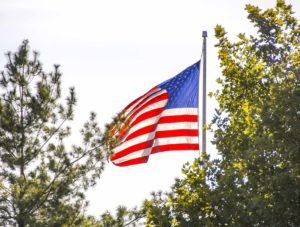 Democrats in the U.S. Senate are moving forward on a resolution to block sweeping tariffs targeting Canada as President Donald Trump presses Republican lawmakers to continue backing his trade agenda. Sen. Tim Kaine plans to force a vote on Trump’s use of the International Economic Emergency Powers Act, also called IEEPA, to declare an emergency over fentanyl trafficking to hit Canada with devastating duties. “The president has justified the imposition of these tariffs on, in my view, a made-up emergency,” Kaine said Tuesday. U.S. government data shows the volume of fentanyl seized at the northern border is tiny. The Annual Threat Assessment report, released last week, does not mention Canada in its section on illicit drugs and fentanyl. The vote will test whether Republican senators continue to back Trump’s tariffs on Canada — tariffs that, according to polling, are not supported by most Americans.
Democrats in the U.S. Senate are moving forward on a resolution to block sweeping tariffs targeting Canada as President Donald Trump presses Republican lawmakers to continue backing his trade agenda. Sen. Tim Kaine plans to force a vote on Trump’s use of the International Economic Emergency Powers Act, also called IEEPA, to declare an emergency over fentanyl trafficking to hit Canada with devastating duties. “The president has justified the imposition of these tariffs on, in my view, a made-up emergency,” Kaine said Tuesday. U.S. government data shows the volume of fentanyl seized at the northern border is tiny. The Annual Threat Assessment report, released last week, does not mention Canada in its section on illicit drugs and fentanyl. The vote will test whether Republican senators continue to back Trump’s tariffs on Canada — tariffs that, according to polling, are not supported by most Americans.
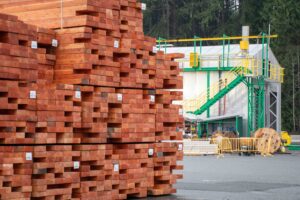 President Donald Trump is prepared to impose tariffs on many Canadian products that are shipped to the United States. Included on the list of tariffs are the wood products industry, which is facing a 25 percent tariff on products shipped south of the border. In response to the President’s actions, the Vermont House Committee on Agriculture and Forestry took testimony from two employees at the Agency of Natural Resources last week… In the past two years Vermont has lost two sawmills, becoming more reliant on Canada. Vermont imported $52 million in sawmill and wood products from Canada in 2024. Pierson said some of the wood was shipped from Vermont to Canada where it was processed and shipped south.
President Donald Trump is prepared to impose tariffs on many Canadian products that are shipped to the United States. Included on the list of tariffs are the wood products industry, which is facing a 25 percent tariff on products shipped south of the border. In response to the President’s actions, the Vermont House Committee on Agriculture and Forestry took testimony from two employees at the Agency of Natural Resources last week… In the past two years Vermont has lost two sawmills, becoming more reliant on Canada. Vermont imported $52 million in sawmill and wood products from Canada in 2024. Pierson said some of the wood was shipped from Vermont to Canada where it was processed and shipped south.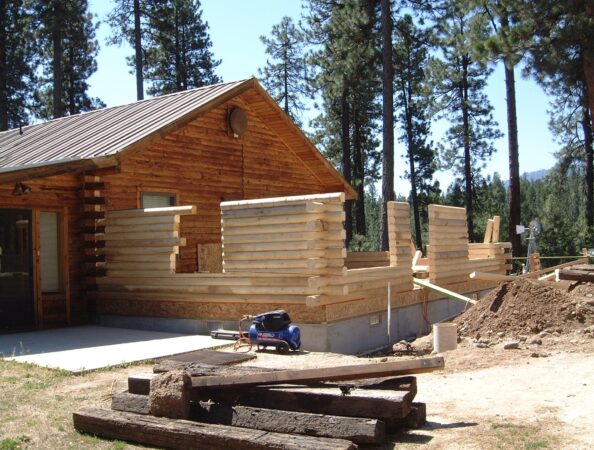 The Arizona House of Representatives recently passed out of the House, a wildfire insurance risk modeling bill, designed to reduce homeowner insurance cancellations, and help residents in wildfire prone regions to obtain homeowners’ insurance. Sponsored by District 7 Representative Dave Marshal, the bill would reduce the insurance companies practice of “blanket” cancellations of homeowner insurance. The key element of the legislation would cause the insurance companies to apply a wildfire risk modeling assessment on “individual” properties rather than the “blanket” assessments practice of entire neighborhoods… Property owners who want a cozy home in a small canyon surrounded by dense brush and low-level trees are at great risk of losing insurance coverage and losing their home to fire.
The Arizona House of Representatives recently passed out of the House, a wildfire insurance risk modeling bill, designed to reduce homeowner insurance cancellations, and help residents in wildfire prone regions to obtain homeowners’ insurance. Sponsored by District 7 Representative Dave Marshal, the bill would reduce the insurance companies practice of “blanket” cancellations of homeowner insurance. The key element of the legislation would cause the insurance companies to apply a wildfire risk modeling assessment on “individual” properties rather than the “blanket” assessments practice of entire neighborhoods… Property owners who want a cozy home in a small canyon surrounded by dense brush and low-level trees are at great risk of losing insurance coverage and losing their home to fire. The Canadian Wood Council (CWC) is pleased to announce the release of five new Environmental Product Declarations (EPDs) for Canadian softwood lumber, oriented strand board (OSB), plywood, trusses, and prefabricated wood I-joists. These EPDs provide comprehensive, transparent environmental data on the potential impacts associated with the cradle-to-gate life cycle stages of these essential wood products. Developed as regionalized, industry-wide business-to-business (B2B) Type III declarations, the EPDs comply with the highest international standards, including ISO 21930, ISO 14025, ISO 14040, ISO 14044, the governing product category rules, and ASTM General Program Instructions for Type III EPDs. This ensures credible, third-party verified environmental impact data, supporting designers, builders, and policymakers in making informed, sustainable material choices. The EPDs are available for download from the Canadian Wood Council’s
The Canadian Wood Council (CWC) is pleased to announce the release of five new Environmental Product Declarations (EPDs) for Canadian softwood lumber, oriented strand board (OSB), plywood, trusses, and prefabricated wood I-joists. These EPDs provide comprehensive, transparent environmental data on the potential impacts associated with the cradle-to-gate life cycle stages of these essential wood products. Developed as regionalized, industry-wide business-to-business (B2B) Type III declarations, the EPDs comply with the highest international standards, including ISO 21930, ISO 14025, ISO 14040, ISO 14044, the governing product category rules, and ASTM General Program Instructions for Type III EPDs. This ensures credible, third-party verified environmental impact data, supporting designers, builders, and policymakers in making informed, sustainable material choices. The EPDs are available for download from the Canadian Wood Council’s 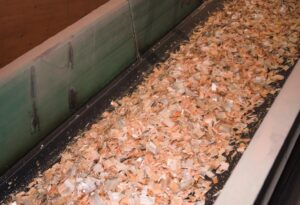 Prince George city council took the first step in renewing its contract with Lakeland Mills Ltd. to supply fibre for the Downtown Renewable Energy System through 2026 with options to extend it through 2027 and 2028 at its Monday, April 7 meeting. From a central location near the intersection of Second Avenue and George Street, the system uses wood waste to power boilers that pump heated water to buildings across downtown Prince George like city hall, the Prince George Public Library, the Canfor Leisure Pool, the Ramada Hotel and more. The original contract with Lakeland Mills to supply the products used to power the boilers ran from 2012 to 2022. If the bylaw creating the new agreement eventually passes fourth reading, the new agreement would stretch retroactively from July 1, 2022 to Dec. 31, 2026 with options to extend it through 2027 and 2028.
Prince George city council took the first step in renewing its contract with Lakeland Mills Ltd. to supply fibre for the Downtown Renewable Energy System through 2026 with options to extend it through 2027 and 2028 at its Monday, April 7 meeting. From a central location near the intersection of Second Avenue and George Street, the system uses wood waste to power boilers that pump heated water to buildings across downtown Prince George like city hall, the Prince George Public Library, the Canfor Leisure Pool, the Ramada Hotel and more. The original contract with Lakeland Mills to supply the products used to power the boilers ran from 2012 to 2022. If the bylaw creating the new agreement eventually passes fourth reading, the new agreement would stretch retroactively from July 1, 2022 to Dec. 31, 2026 with options to extend it through 2027 and 2028.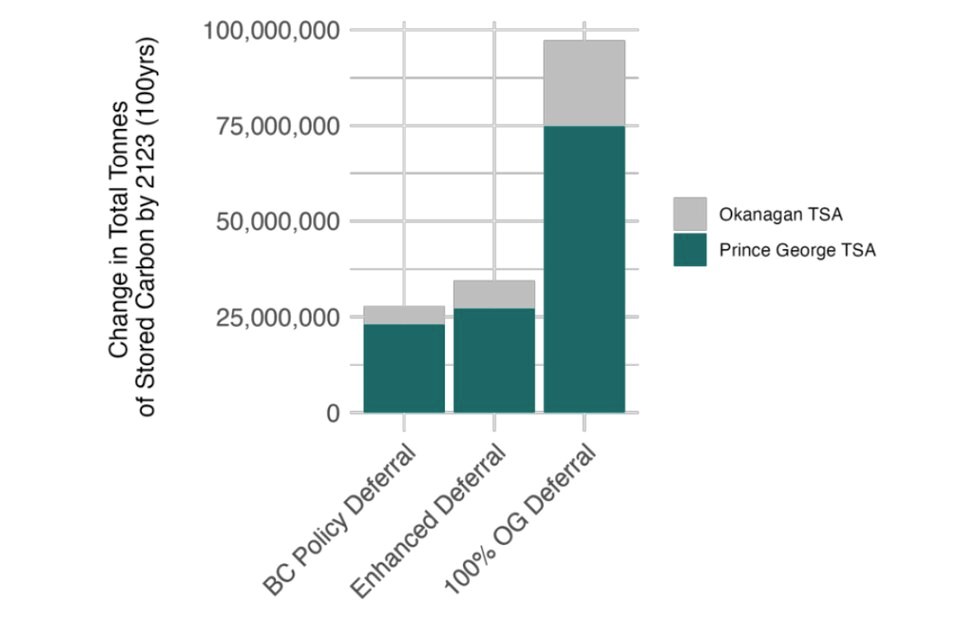



 The Osoyoos Indian Band (OIB) and American forestry company Weyerhaeuser have struck what they describe as a “landmark partnership” to manage a tree farm licence (TFL) east of OIB reserve land near Oliver. The OIB said stewardship of their traditional territory “is both a responsibility and an opportunity”. Through this partnership, OIB says it has taken a co-leadership role in managing TFL 59, an area of “profound cultural, ecological, and economic significance”. The two aim to raise the benchmark for sustainable forestry by balancing modern forestry practices with traditional knowledge… The tenure has a broad and ambitious set of management objectives, including reducing wildfire risk, protecting water resources, enhancing wildlife habitat, increasing forest resiliency and rehabilitating areas impacted by the devastating 2021 wildfires.
The Osoyoos Indian Band (OIB) and American forestry company Weyerhaeuser have struck what they describe as a “landmark partnership” to manage a tree farm licence (TFL) east of OIB reserve land near Oliver. The OIB said stewardship of their traditional territory “is both a responsibility and an opportunity”. Through this partnership, OIB says it has taken a co-leadership role in managing TFL 59, an area of “profound cultural, ecological, and economic significance”. The two aim to raise the benchmark for sustainable forestry by balancing modern forestry practices with traditional knowledge… The tenure has a broad and ambitious set of management objectives, including reducing wildfire risk, protecting water resources, enhancing wildlife habitat, increasing forest resiliency and rehabilitating areas impacted by the devastating 2021 wildfires.
 Conservation groups are warning that a proposed Alberta government plan for a sub-region in west-central Alberta would wipe out two caribou populations if implemented. The draft plan for the Upper Smoky sub-region would enable the U.S.-based timber company Weyerhaeuser to entirely clearcut the last winter range forests… A Caribou Task Force, made up of Indigenous groups, industry, municipalities, various user groups and interest groups, had been established to advise the Alberta government on Upper Smoky sub-regional planning. These multi-stakeholder conversations were held from 2019 to 2021; however, none of the task force’s recommendations related to caribou conservation and recovery were reflected in the report. Public engagement runs until June 25
Conservation groups are warning that a proposed Alberta government plan for a sub-region in west-central Alberta would wipe out two caribou populations if implemented. The draft plan for the Upper Smoky sub-region would enable the U.S.-based timber company Weyerhaeuser to entirely clearcut the last winter range forests… A Caribou Task Force, made up of Indigenous groups, industry, municipalities, various user groups and interest groups, had been established to advise the Alberta government on Upper Smoky sub-regional planning. These multi-stakeholder conversations were held from 2019 to 2021; however, none of the task force’s recommendations related to caribou conservation and recovery were reflected in the report. Public engagement runs until June 25 

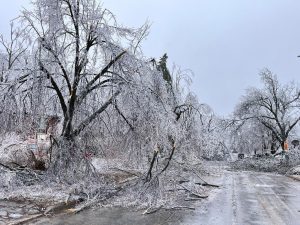
 There is still plenty of snow around, but today, April 1, marks the first day of the fire season. That means Ontario’s
There is still plenty of snow around, but today, April 1, marks the first day of the fire season. That means Ontario’s  The Trump administration’s drive to harvest more timber from national forests will lead to a “thriving wood products economy” that doesn’t rely on imports, a top Forest Service official told the agency’s top brass in a memo last week. But the timber goal acting Associate Chief Chris French pinpointed — a 25 percent increase from current levels offered for sale — would fall short of the first Trump administration’s ambitions and barely make a dent in U.S. timber supplies, data shows. The chasm between the new administration’s rhetoric — cut more trees on national forests to reduce the country’s reliance on wood imports and rejuvenate the economy — and the math behind French’s memo reflect the hurdles to returning to the timber industry’s prosperous times around national forests… Timber industry representatives and others familiar with the Forest Service’s timber program point to several flaws in the administration’s timber-boom narrative, although the industry welcomes the Forest Service’s moves to step up production.
The Trump administration’s drive to harvest more timber from national forests will lead to a “thriving wood products economy” that doesn’t rely on imports, a top Forest Service official told the agency’s top brass in a memo last week. But the timber goal acting Associate Chief Chris French pinpointed — a 25 percent increase from current levels offered for sale — would fall short of the first Trump administration’s ambitions and barely make a dent in U.S. timber supplies, data shows. The chasm between the new administration’s rhetoric — cut more trees on national forests to reduce the country’s reliance on wood imports and rejuvenate the economy — and the math behind French’s memo reflect the hurdles to returning to the timber industry’s prosperous times around national forests… Timber industry representatives and others familiar with the Forest Service’s timber program point to several flaws in the administration’s timber-boom narrative, although the industry welcomes the Forest Service’s moves to step up production.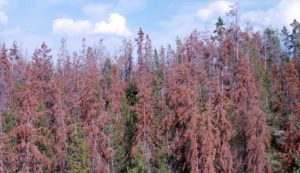 An insect known for turning entire mountainsides the color of rust could be making a resurgence in Colorado. The pest is none other than the mountain pine beetle. After a roughly decade-long period of relatively lower populations, the bugs are rebuilding their numbers along the Front Range and in southwest Colorado, according to an annual forest health report published by the Colorado State Forest Service in late March. “I’m a little concerned moving in this summer because we really haven’t had any precipitation,” said Dan West, the forest entomologist for the Colorado State Forest Service. “I’m worried bark beetles are going to increase their populations in these drought-stricken trees.” Few bugs have had a more visible impact on forests across the western U.S.
An insect known for turning entire mountainsides the color of rust could be making a resurgence in Colorado. The pest is none other than the mountain pine beetle. After a roughly decade-long period of relatively lower populations, the bugs are rebuilding their numbers along the Front Range and in southwest Colorado, according to an annual forest health report published by the Colorado State Forest Service in late March. “I’m a little concerned moving in this summer because we really haven’t had any precipitation,” said Dan West, the forest entomologist for the Colorado State Forest Service. “I’m worried bark beetles are going to increase their populations in these drought-stricken trees.” Few bugs have had a more visible impact on forests across the western U.S.

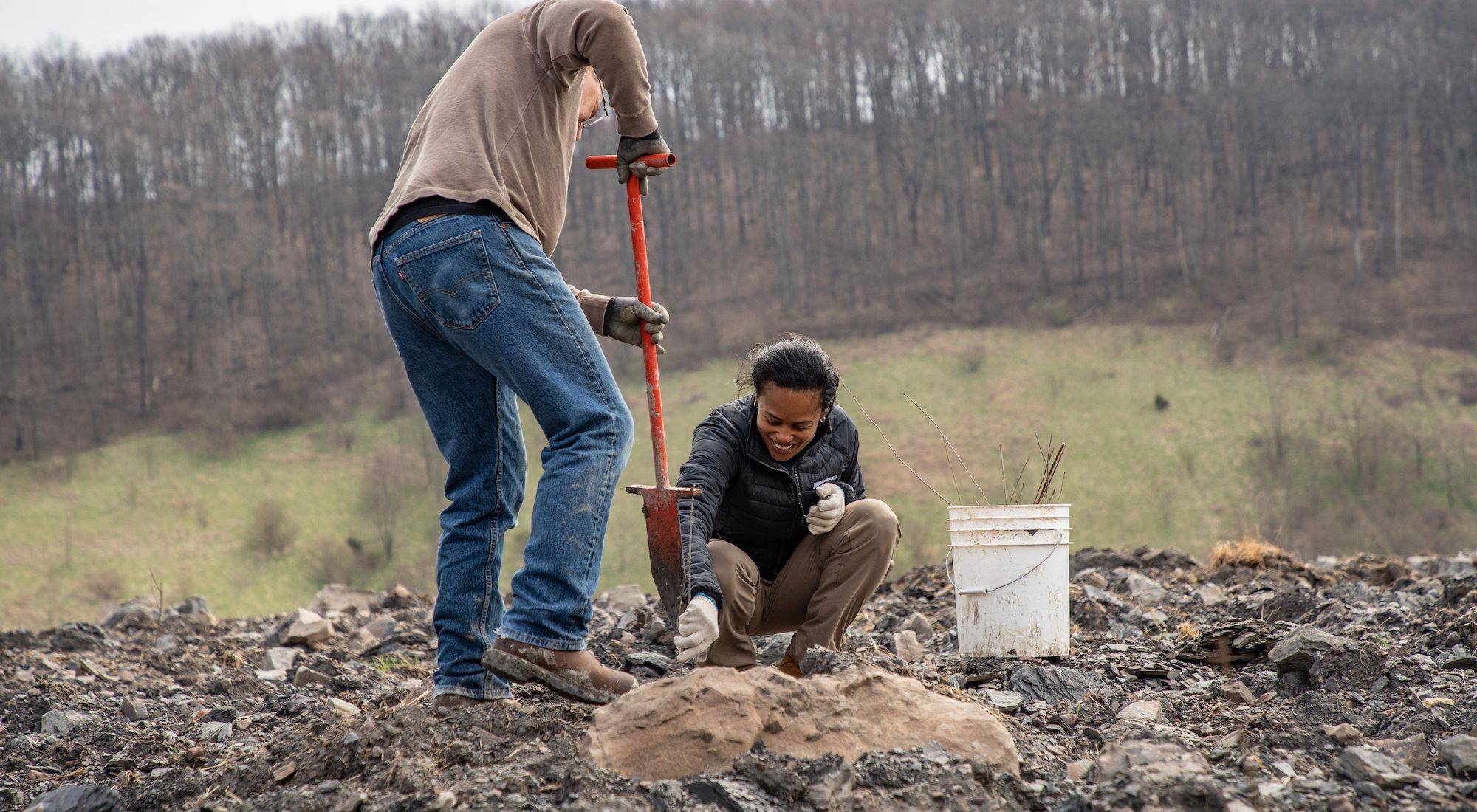
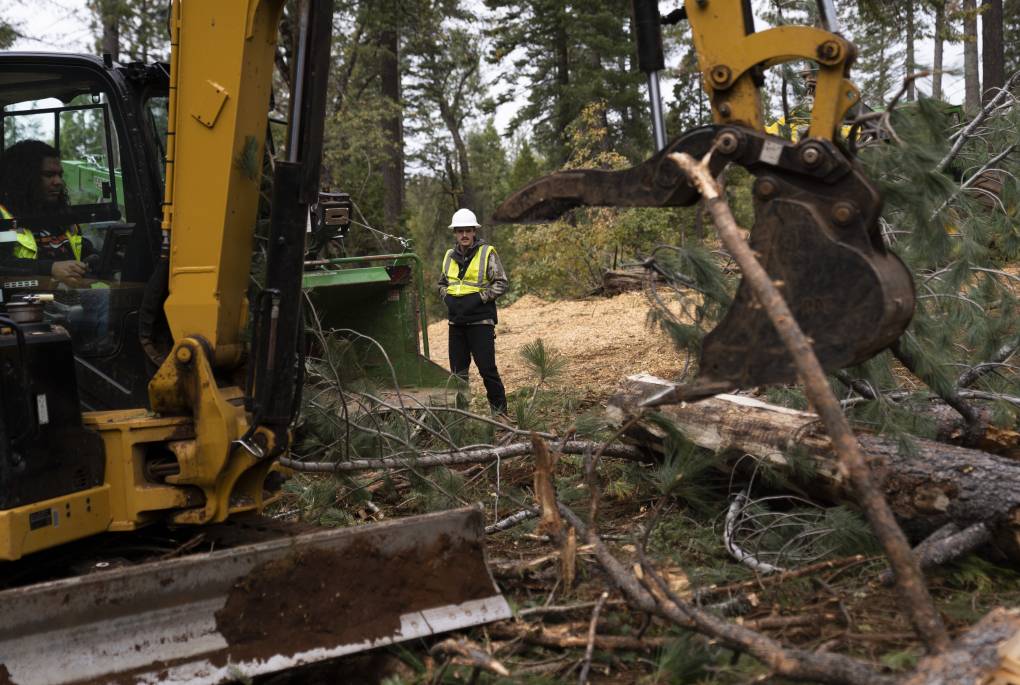
 Last week, Gov. Kevin Stitt criticized the Oklahoma State Forester’s response to the fires that blazed across Oklahoma in March. This week, the governor is floating the concept of axing the entire Forestry Services division. Stitt has said he believes the Oklahoma Forestry Service held back resources during the fires. When asked to specify which resources during a press conference, Stitt said he didn’t know. “The fact that we can’t get answers about where their assets were around the state is further proof that this is a deep-seated bureaucracy that are trying to protect their actions,” Stitt said. “We still haven’t been able to figure out where they were during that thing.” Just weeks after the fires, the state’s Chief Forester Mark Goeller resigned following criticism from the governor.
Last week, Gov. Kevin Stitt criticized the Oklahoma State Forester’s response to the fires that blazed across Oklahoma in March. This week, the governor is floating the concept of axing the entire Forestry Services division. Stitt has said he believes the Oklahoma Forestry Service held back resources during the fires. When asked to specify which resources during a press conference, Stitt said he didn’t know. “The fact that we can’t get answers about where their assets were around the state is further proof that this is a deep-seated bureaucracy that are trying to protect their actions,” Stitt said. “We still haven’t been able to figure out where they were during that thing.” Just weeks after the fires, the state’s Chief Forester Mark Goeller resigned following criticism from the governor.


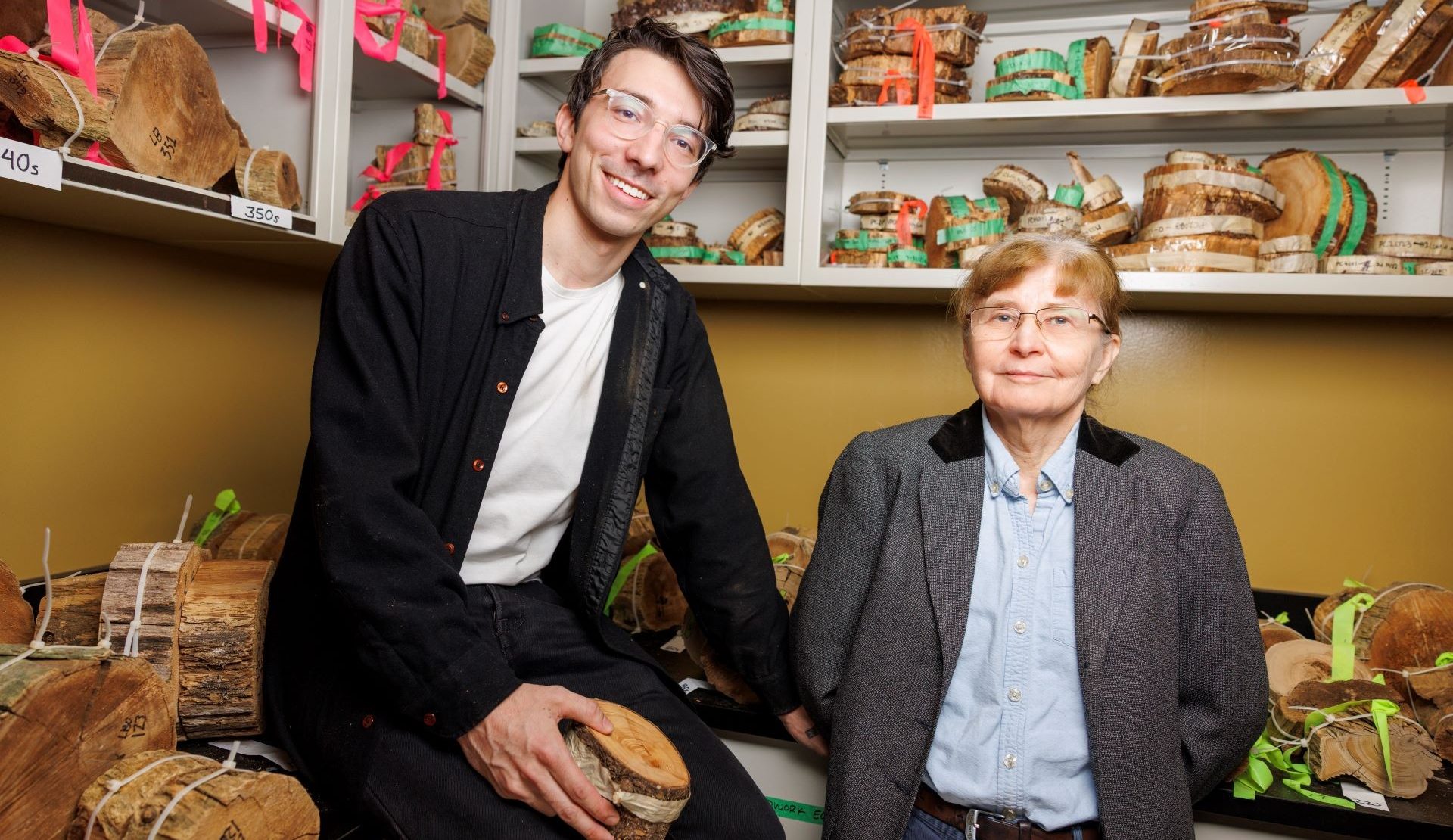
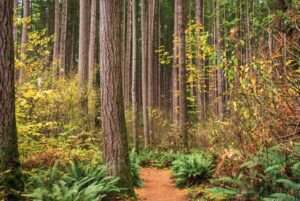 International Paper, the global leader in sustainable packaging solutions, today announced it exceeded its sustainability goal of conserving and restoring 1 million acres of ecologically significant forestland. This milestone achievement enhances biodiversity protection, strengthens carbon sequestration, and supports sustainable land management, reinforcing the company’s commitment to environmental stewardship and climate resilience. “We are thrilled to have surpassed one of our Healthy and Abundant Forest targets to conserve 1 million acres of ecologically significant forestland by restoring nearly 1,158,00 total acres, and we did so six years ahead of schedule,” said Sophie Beckham, Chief Sustainability Oficer, International Paper. “Reaching this milestone is a testament to the company’s ongoing commitment to nature conservation and to the great work of our conservation partners.” IP released its 2024
International Paper, the global leader in sustainable packaging solutions, today announced it exceeded its sustainability goal of conserving and restoring 1 million acres of ecologically significant forestland. This milestone achievement enhances biodiversity protection, strengthens carbon sequestration, and supports sustainable land management, reinforcing the company’s commitment to environmental stewardship and climate resilience. “We are thrilled to have surpassed one of our Healthy and Abundant Forest targets to conserve 1 million acres of ecologically significant forestland by restoring nearly 1,158,00 total acres, and we did so six years ahead of schedule,” said Sophie Beckham, Chief Sustainability Oficer, International Paper. “Reaching this milestone is a testament to the company’s ongoing commitment to nature conservation and to the great work of our conservation partners.” IP released its 2024 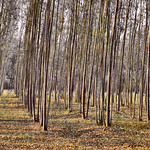 Over the last five years the forest carbon market in North America has experienced a period of rapid expansion, with a surge in dealmaking and heightened interest from institutional investors. In recent months, major corporations have signed high-profile offtake agreements for forest carbon credits, with the latest focus being on high quality-sequestration projects. At the same time, the uptake of Improved Forest Management (IFM) projects has grown, with over 1 million acres of IFM projects added in 2023 and 2024, reflecting the growing recognition of sustainable forestry as a viable tool for emissions removal and reduction. The rise in corporate demand for nature-based solutions, coupled with compliance frameworks including California’s cap-and-trade and emerging cap-and-invest systems, are reshaping the market landscape. Investors, timberland managers, and carbon project developers are competing in an increasingly competitive and innovative space.
Over the last five years the forest carbon market in North America has experienced a period of rapid expansion, with a surge in dealmaking and heightened interest from institutional investors. In recent months, major corporations have signed high-profile offtake agreements for forest carbon credits, with the latest focus being on high quality-sequestration projects. At the same time, the uptake of Improved Forest Management (IFM) projects has grown, with over 1 million acres of IFM projects added in 2023 and 2024, reflecting the growing recognition of sustainable forestry as a viable tool for emissions removal and reduction. The rise in corporate demand for nature-based solutions, coupled with compliance frameworks including California’s cap-and-trade and emerging cap-and-invest systems, are reshaping the market landscape. Investors, timberland managers, and carbon project developers are competing in an increasingly competitive and innovative space.
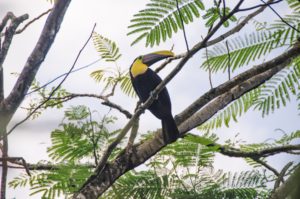 Sometime next month, the Bolivian government and a company you probably haven’t heard of are poised to offer what could be the largest single sale of carbon credits in history. The deal will be unusual not only for its size—$1.2 billion, organizers said—but also because it will be backed by a national government and packaged under new rules developed as part of the Paris Agreement. Depending on who you ask, the sale could mark a new frontier in global climate finance, the latest offering in a long and dubious line of carbon credits or, potentially, a giant escalation in corporate greenwashing… “I don’t think a lot of people even in the climate world quite appreciate how much volume and activity may be emerging quickly from this new area,” said Danny Cullenward, an economist and lawyer focused on the scientific integrity of climate policy.
Sometime next month, the Bolivian government and a company you probably haven’t heard of are poised to offer what could be the largest single sale of carbon credits in history. The deal will be unusual not only for its size—$1.2 billion, organizers said—but also because it will be backed by a national government and packaged under new rules developed as part of the Paris Agreement. Depending on who you ask, the sale could mark a new frontier in global climate finance, the latest offering in a long and dubious line of carbon credits or, potentially, a giant escalation in corporate greenwashing… “I don’t think a lot of people even in the climate world quite appreciate how much volume and activity may be emerging quickly from this new area,” said Danny Cullenward, an economist and lawyer focused on the scientific integrity of climate policy.
 As the EU pushes to meet its climate neutrality targets by 2050, the concept of ‘renewable carbon’ is rising fast in both policy and industry circles. Unlike fossil carbon, which is extracted from underground and released into the atmosphere during production and consumption, renewable carbon comes from above-ground sources, biomass, recycled materials, and captured CO2. In short, it’s carbon that is already part of the ongoing carbon cycle. “Renewable carbon is not just about replacing fossil-based materials: it’s about rethinking how we design, use, and reuse resources across industries,” said Michael Carus, managing director of the Germany-based Nova Institute during a recent event hosted by EURACTIV and Metsä Group. This kind of thinking is gaining traction among companies looking to green their supply chains. Wood-based products, for instance, have a unique potential to store carbon for long periods when used in construction or durable goods, making them a crucial component of a low-carbon, circular economy.
As the EU pushes to meet its climate neutrality targets by 2050, the concept of ‘renewable carbon’ is rising fast in both policy and industry circles. Unlike fossil carbon, which is extracted from underground and released into the atmosphere during production and consumption, renewable carbon comes from above-ground sources, biomass, recycled materials, and captured CO2. In short, it’s carbon that is already part of the ongoing carbon cycle. “Renewable carbon is not just about replacing fossil-based materials: it’s about rethinking how we design, use, and reuse resources across industries,” said Michael Carus, managing director of the Germany-based Nova Institute during a recent event hosted by EURACTIV and Metsä Group. This kind of thinking is gaining traction among companies looking to green their supply chains. Wood-based products, for instance, have a unique potential to store carbon for long periods when used in construction or durable goods, making them a crucial component of a low-carbon, circular economy.
